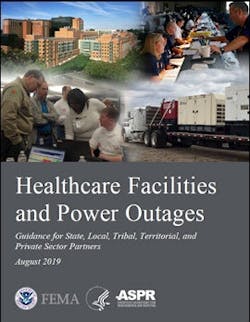Across the Nation, in every community, there are individuals in hospitals, nursing homes, and other long-term care facilities dependent on power for their well-being. And healthcare facility power outages are becoming more of a concern as the threat from natural disasters grows, and energy infrastructure ages.
A wide range of facilities provide care in the United States. A portion of these facilities fall within the seventeen provider and supplier types regulated by states and the Centers for Medicare and Medicaid Services (CMS), including emergency preparedness regulations. A portion, like assisted living facilities, board and care homes, individuals living at home, are not regulated by CMS but still may have electrically-dependent residents.
Individuals rely on electricity in a number of ways. Patients of some facilities, such as hospitals, receive acute medical care that relies on electricity. Other individuals with access and functional needs or chronic health conditions rely on power-dependent durable medical equipment, but may reside in an assisted living facility, board and care home, or their own home. Individuals also may have an implanted cardiac device that must be plugged in to recharge, while some individuals cannot regulate their own body temperatures and are vulnerable to a lack of environmental controls such as air conditioning
This document provides guidance and resources on improving resilience to healthcare facility power outages. Resilience is the backbone of emergency management. The nation’s ability to weather storms and disasters without experiencing loss significantly reduces our risk. The Federal Emergency Management Agency (FEMA) developed this guide in collaboration with, and support from, the U.S. Department of Health and Human Services’ (HHS) Office of the Assistant Secretary for Preparedness and Response (ASPR) and other partners to meet, in part, the requirements of Section 1208 of the Disaster Recovery Reform Act. This document informs state, local, tribal, and territorial governments, first responders, utility companies, and healthcare facilities on:
- Healthcare facility preparedness standards and challenges
- Ways to integrate emergency preparedness efforts throughout the whole community
- Methods for prioritizing assistance to hospitals, nursing homes, and other long-term care facilities during power outages.
